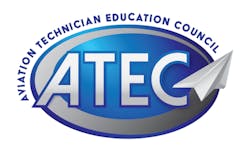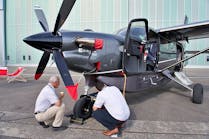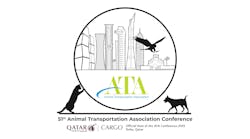Industry Still Awaiting Aviation Maintenance Curriculum Modernization
Aviation maintenance technician schools have long-been beholden to Federal Aviation Administration (FAA) Part 147 curriculum requirements, which mandate what topics are taught to budding aviators.
The regulation was originally established under the Civil Aviation Administration and re-codified into 14 CFR in 1962. It has not significantly changed since that time, which means schools are teaching 1960s technology to a highly tech-savvy generation.
While industry will continue to find new ways to “mitigate” the ever-widening skills gap for newly educated entrants, ATEC continues to push for a change to the regulation that will provide flexibility in what and how we teach the next generation of mechanics.
To recap, after a decade-long review of an aviation rulemaking advisory committee recommendation to revise Part 147, the agency issued a notice of proposed rulemaking in October 2015.
While industry supported the proposed removal of outdated curriculum requirements, it objected to the agency’s continued reliance on class time in lieu of technical capability.
The FAA has apparently listened, announcing its intention to publish a supplemental notice of proposed rulemaking that would allow for competency-based programs. That announcement came in September 2017; a timeline published in the docket anticipates an August 2018 publication date. Discussions with agency representatives suggest it will take another two years — after comments to the supplemental rule close — to promulgate a final rule.
While the agency continues along its now-five-year production schedule, industry is recruiting Congress to help speed up the process. In May, U.S. Senators Orrin Hatch (R-UT), Maria Cantwell (D-WA), James Inhofe (R-OK), and Richard Blumenthal (D-CT) introduced a bill that, if enacted, would require a new Part 147 within six months. While aggressive, ATEC hopes it will get the attention of those in charge of agency prioritization. The legislation was supported by a coalition of 21 aviation industry groups. In a May 9 letter, the group stated, “while industry will continue to lend support, and appreciates the time and effort required for well thought out and monitored rulemaking, it cannot afford to sit by and wait for regulatory relief.”
The plan is to include the Part 147 language in the Senate’s version of the FAA reauthorization bill, which will come up for deliberation later this summer.
Meanwhile, an industry-agency working group continues development of new Aviation Maintenance Technician (AMT) Airman Certification Standard (ACS) expected to publish in 2020. (The agency published a draft version of the AMT ACS for comment last month.)
The new document — which will replace current practical test standards — will provide a single set of standards for the AMT airman knowledge, oral, and practical tests. Not only will it better communicate what a mechanic applicant needs to know, consider, and do to earn an airman certificate, it will be periodically reviewed and revised (in partnership with industry) to ensure testing is in line with airman knowledge and skill requirements.
Industry recommends that the new testing standards are also utilized as the basis for curriculum requirements once a new Part 147 is issued. A June 28, 2017 working group recommendation suggested as much. The group maintains that utilization of the AMT ACS for both testing and training will ensure correlation between the two, something the aviation maintenance education community has never enjoyed.
While subsequent agency communications suggest a separate standard for training curriculum is in the works, ATEC will continue to push for a streamlined and simplified process. Imminent workforce challenges demand that we get this seemingly simple issue resolved so that schools can better teach knowledge and skills that are relevant to both the FAA airman test, and today’s AMT professional.



